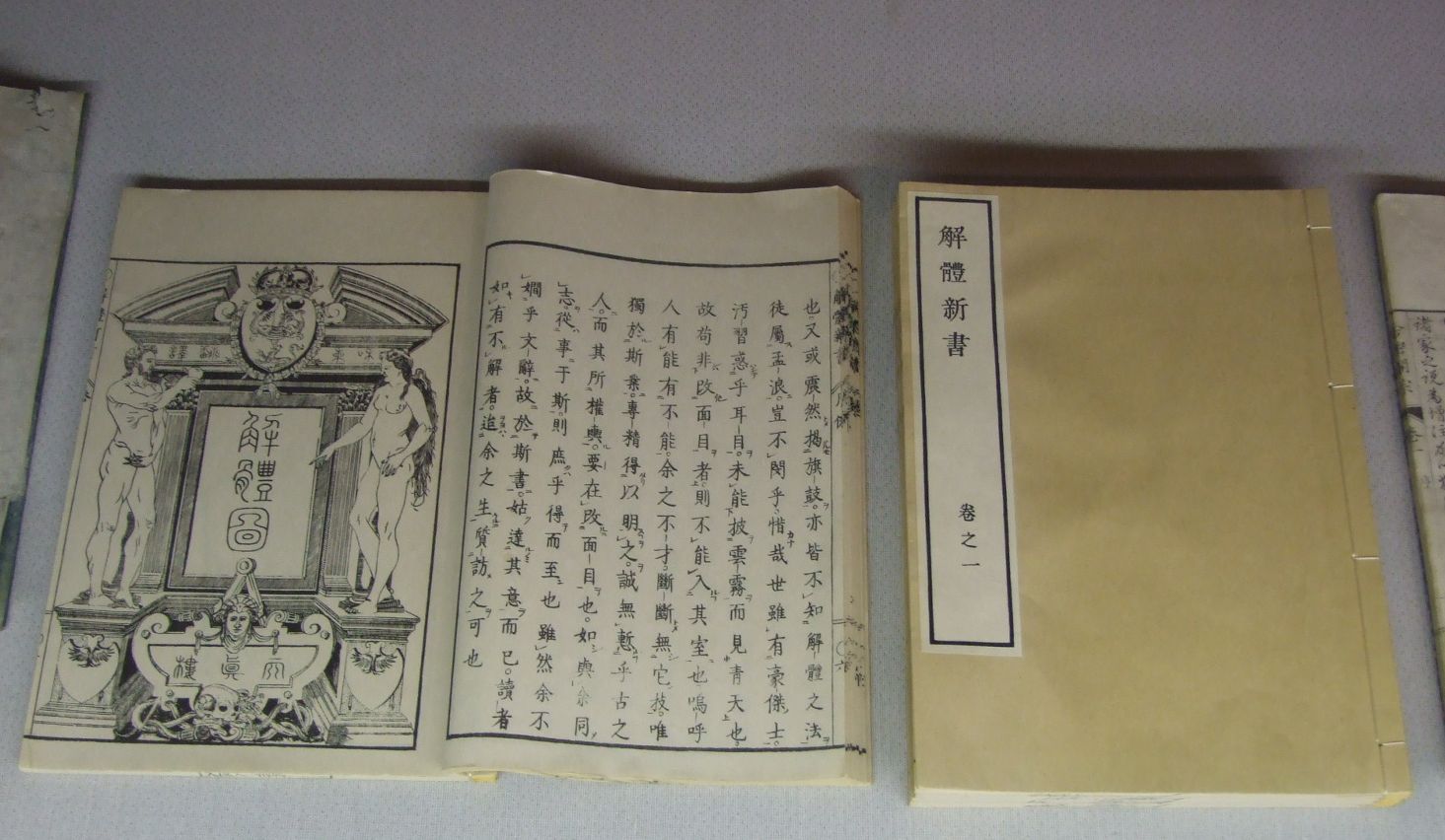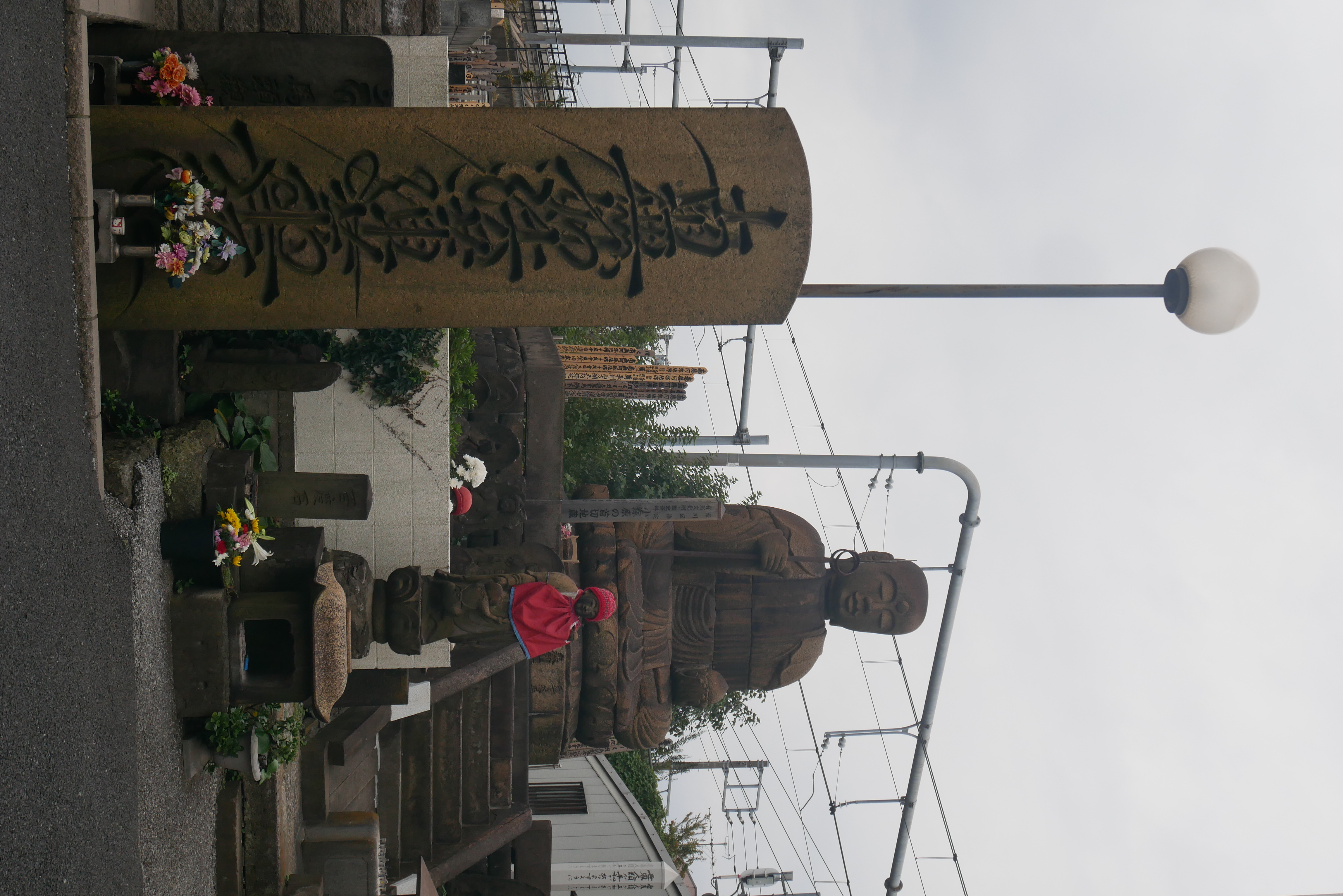|
Kaitai Shinsho
is a medical text translated into Japanese during the Edo period. It was written by Sugita Genpaku, and was published by Suharaya Ichibee () in 1774, the third year of An'ei. The body comprises four volumes, the illustrations, one. The contents are written kanbun-style. It is based on the Dutch-language translation , often known in Japan as , of Johann Adam Kulmus’ Latin , published before 1722 (exact year is unknown) in Gdańsk, Polish–Lithuanian Commonwealth. As a full-blown translation from a Western language, it was the first of its kind in Japan. Background On 4 March 1771, the eighth year of Meiwa, the students of Rangaku medicine Sugita Genpaku, Maeno Ryōtaku, Nakagawa Jun'an, ''et al.'', by studying performing autopsies on criminals executed at the Kozukappara execution grounds (now, there is a possibility that Katsuragawa Hoshū was at this facility as well, but from the description in , it seems more likely that he was not). Both Sugita and Maeno had the book ' ... [...More Info...] [...Related Items...] OR: [Wikipedia] [Google] [Baidu] |
Kozukappara Execution Grounds
The were one of the three sites in the vicinity of Edo (the forerunner of present-day Tokyo, Japan) where the Tokugawa shogunate executed criminals in the Edo period. Alternate romanized spellings are ''Kozukahara'' and ''Kotsukappara''. The site is located in modern Minami Senju, Arakawa, Tokyo, a three-minute walk away from Minami-Senju Station. Located next to Enmeiji Temple, a large part of the grounds are now covered by railway tracks. It is estimated that between 100,000 and 200,000 people were executed here. Those executed include Hashimoto Sanai and Yoshida Shōin, who were executed as a result of the Ansei Purge. Sugita Genpaku, Nakagawa Jun'an, Katsuragawa Hoshū and their colleagues studied anatomy by conducting dissections at Kozukappara. Kozukappara began operation in 1651, and continued until the Meiji period. Executions were stopped in an attempt to convince Western powers to end the unequal treaties with Japan. See also *Capital punishment in Japan Ca ... [...More Info...] [...Related Items...] OR: [Wikipedia] [Google] [Baidu] |
Carl Peter Thunberg
Carl Peter Thunberg, also known as Karl Peter von Thunberg, Carl Pehr Thunberg, or Carl Per Thunberg (11 November 1743 – 8 August 1828), was a Swedish naturalist and an "apostle" of Carl Linnaeus. After studying under Linnaeus at Uppsala University, he spent seven years travelling in southern Africa and Asia, collecting and describing many plants and animals new to European science, and observing local cultures. He has been called "the father of South African botany", "pioneer of Occidental Medicine in Japan", and the "Japanese Linnaeus". Early life Thunberg was born and grew up in Jönköping, Sweden. At the age of 18, he entered Uppsala University where he was taught by Carl Linnaeus, regarded as the "father of modern taxonomy". Thunberg graduated in 1767 after 6 years of studying. To deepen his knowledge in botany, medicine and natural history, he was encouraged by Linnaeus in 1770 to travel to Paris and Amsterdam. In Amsterdam and Leiden Thunberg met the Dutch bota ... [...More Info...] [...Related Items...] OR: [Wikipedia] [Google] [Baidu] |
Sweden
Sweden, formally the Kingdom of Sweden,The United Nations Group of Experts on Geographical Names states that the country's formal name is the Kingdom of SwedenUNGEGN World Geographical Names, Sweden./ref> is a Nordic countries, Nordic country located on the Scandinavian Peninsula in Northern Europe. It borders Norway to the west and north, Finland to the east, and is connected to Denmark in the southwest by Øresund Bridge, a bridgetunnel across the Öresund. At , Sweden is the largest Nordic country, the third-largest country in the European Union, and the List of European countries by area, fifth-largest country in Europe. The Capital city, capital and largest city is Stockholm. Sweden has a total population of 10.5 million, and a low population density of , with around 87% of Swedes residing in urban areas in the central and southern half of the country. Sweden has a nature dominated by forests and a large amount of lakes, including List of largest lakes of Europ ... [...More Info...] [...Related Items...] OR: [Wikipedia] [Google] [Baidu] |
Yoshio Kōsaku
(1724 – October 4, 1800), also known as was a Japanese physician and scholar of "Dutch studies" (''Rangaku''), and the chief Dutch translator in Nagasaki, often accompanying Dutch East India Company officials on missions to Edo and other official business. As a member of one of the five samurai families supported by the Tokugawa shogunate as hereditary official Dutch translators, Kōsaku vetted imported documents (Christian materials were prohibited in Edo period Japan) and helped to keep the shogunate informed of global political matters. From roughly 1770 to 1800, he served as the chief mediator between the Dutch community on Dejima and the shogunate.Screech. p15. Kōsaku was quite prolific in his writings, and has been described as "perhaps ... the most knowledgeable person n Japanabout the West in his day." He maintained a Dutch style home and Dutch-style medical school, which at times enrolled up to six hundred students. Kōsaku wrote thirty-nine works, mostly on top ... [...More Info...] [...Related Items...] OR: [Wikipedia] [Google] [Baidu] |
Cryptanalysis
Cryptanalysis (from the Greek ''kryptós'', "hidden", and ''analýein'', "to analyze") refers to the process of analyzing information systems in order to understand hidden aspects of the systems. Cryptanalysis is used to breach cryptographic security systems and gain access to the contents of encrypted messages, even if the cryptographic key is unknown. In addition to mathematical analysis of cryptographic algorithms, cryptanalysis includes the study of side-channel attacks that do not target weaknesses in the cryptographic algorithms themselves, but instead exploit weaknesses in their implementation. Even though the goal has been the same, the methods and techniques of cryptanalysis have changed drastically through the history of cryptography, adapting to increasing cryptographic complexity, ranging from the pen-and-paper methods of the past, through machines like the British Bombes and Colossus computers at Bletchley Park in World War II, to the mathematically advanced ... [...More Info...] [...Related Items...] OR: [Wikipedia] [Google] [Baidu] |
Nagasaki, Nagasaki
is the capital and the largest city of Nagasaki Prefecture on the island of Kyushu in Japan. It became the sole port used for trade with the Portuguese and Dutch during the 16th through 19th centuries. The Hidden Christian Sites in the Nagasaki Region have been recognized and included in the UNESCO World Heritage List. Part of Nagasaki was home to a major Imperial Japanese Navy base during the First Sino-Japanese War and Russo-Japanese War. Near the end of World War II, the American atomic bombings of Hiroshima and Nagasaki made Nagasaki the second and, to date, last city in the world to experience a nuclear attack (at 11:02 am, August 9, 1945 'Japan Standard Time (UTC+9)'). , the city has an estimated population of 407,624 and a population density of 1,004 people per km2. The total area is . History Nagasaki as a Jesuit port of call The first contact with Portuguese explorers occurred in 1543. An early visitor was Fernão Mendes Pinto, who came from Sagr ... [...More Info...] [...Related Items...] OR: [Wikipedia] [Google] [Baidu] |
Shōgun
, officially , was the title of the military dictators of Japan during most of the period spanning from 1185 to 1868. Nominally appointed by the Emperor, shoguns were usually the de facto rulers of the country, though during part of the Kamakura period, shoguns were themselves figureheads, with real power in hands of the Shikken of the Hōjō clan. The office of shogun was in practice hereditary, though over the course of the history of Japan several different clans held the position. The title was originally held by military commanders during Heian period in the eighth and ninth centuries. When Minamoto no Yoritomo gained political ascendency over Japan in 1185, the title was revived to regularize his position, making him the first shogun in the usually understood sense. The shogun's officials were collectively referred to as the ; they were the ones who carried out the actual duties of administration, while the Imperial court retained only nominal authority.Beasley, Willi ... [...More Info...] [...Related Items...] OR: [Wikipedia] [Google] [Baidu] |





